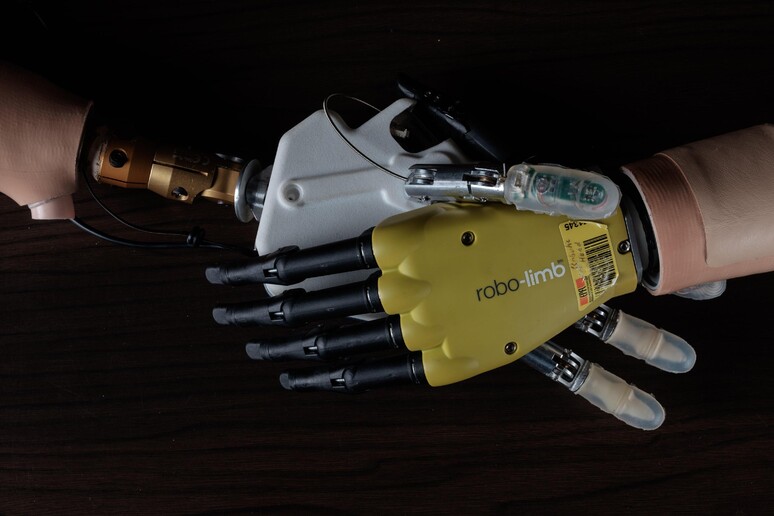The first woman to receive a
bionic hand with a sense of touch has pet a cat and grabbed
objects that she was able to realize were soft, hard, round or
square, feeling the same things she did prior to a workplace
accident in December 2016 in which she lost her left hand.
"I felt an extremely natural feeling that I had not felt for
two and a half years," ANSA was told by Loretana Puglisi, an
entrepreneur from Palazzolo Acreide, near Siracusa.
She was able to get back her sense of touch thanks to the
first bionic hand able to give a feeling very close to natural
sensations.
Described in the Neuron journal, the hi-tech hand imitates
the 'voice' of neurons, reproducing the chorus of signals that
go from the tips of one's fingers to the brain.
"This is a demonstration of how it is possible to replicate
the response of natural touch receptors at a very high level,"
said research coordinator Silvestro Micera from the Istituto di
BioRobotica of the Scuola Sant'Anna and teacher of Translational
Neuro-Engineering at the Lausanne Polytechnic.
The Freiburg University also took part in the research and
the operation itself was conducted at Rome's Policlinico
Gemelli.
The woman began testing the hand for about six months,
beginning in June 2017, when the operation was carried out in
Rome by a team under Paolo Maria Rossini.
"The bionic hand enabled me to grab objects, feeling their
size and consistency without seeing them. When one uses one's
own hands," the woman said, "you don't realize these things but
touch makes it possible to understand many things about objects,
from the shape to how hard they are."
Making such natural perception possible is a code than
enables the bionic hand to transmit to the nerves of the
amputated arm all the variety of perceptions that it would have
received from tactile receptors.
"We did not start from a robotic hand. We started from the
source of tactile information, seeking to reproduce in the most
accurate way possible the dynamics of neurons of fingers when
the hand touches an object," said Giacomo Valle, PhD student at
the Scuola Sant'Anna and the first to sign the publication.
"Thus," he added, "we transmitted a signal to the patient's
nervous system that was immediately recognized as natural."
It is as if "the code managed to imitate the voice of all
different types of neurons, the entire chorus of signals sent
from receptors found on fingertips," said another author of the
research study, Alberto Mazzoni.
For the future, "the idea," Micera said, "is to take one step
at a time, though rather quickly", with the final aim being to
"make the device into an implant in order to enable constant,
daily use" of it.
The results just published, he said, "show that we can do a
great deal".
The first step will be to eliminate the cables, now necessary
to connect the artificial limb and a backpack with batteries and
replace it with a pacemaker, most likely implanted into the
chest, and a WiFi connection to enable daily use.
"We are working," Micera continued, "on a document to
request, for 2019, authorization for the pacemaker implant. We
hope that experimentation will be possible starting from 2020."
The other two challenges, he said, are to make stimulation of
peripheral nerves more efficient and to develop tactile sensors
able to provide more numerous and natural sensations.
ALL RIGHTS RESERVED © Copyright ANSA











